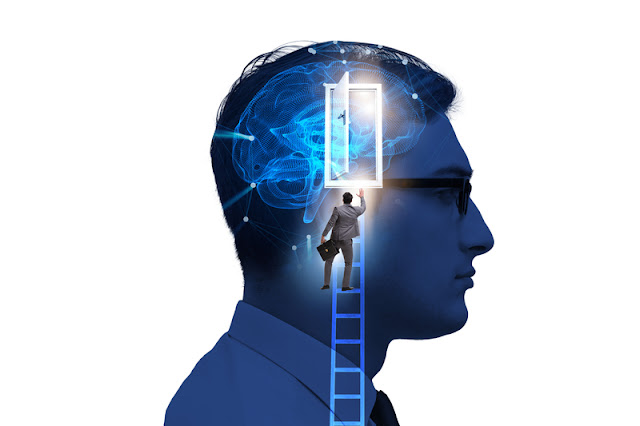Exploring Web 3.0 Examples web 3.0 definition
1. Decentralized Applications (dApps): Unlocking New Possibilities
2. Blockchain-Powered Smart Contracts: Automating Business Processes
3. The Promise of Distributed Ledger Technology:
Unlocking the Potential of Decentralized Data Storage
4. Interconnectivity and Open Source Platforms:
Harnessing the Power of the Internet of Things
5. Machine Learning and AI: Unlocking the Potential of Big Data Analysis
(1) Decentralized Applications (dApps): Unlocking New Possibilities
The rise of decentralized applications (dApps) has revolutionized the way we use technology. This new form of technology has made it possible to access and exchange data and information in a secure and transparent manner. By leveraging the power of distributed ledger technology, dApps are unlocking new possibilities and revolutionizing the way we do business.
At its core, a dApp is an open source software application that runs on a distributed ledger. This ledger is managed by a decentralized network of participants that are collectively responsible for maintaining and updating the records. As a result, all transactions that take place within the dApp are secure and immutable.
Unlike traditional applications, dApps are built on a trustless framework. This helps to reduce the risk of fraud and manipulation. Additionally, dApps are censorship-resistant, meaning they are not subject to the same rules and regulations as traditional
(2) Blockchain-Powered Smart Contracts: Automating Business Processes
Blockchain-powered smart contracts are a revolutionary technology that enable the automation of business processes. Smart contracts are a type of self-executing contracts that are stored on a blockchain-based distributed ledger and use digital signatures to ensure their security and enforceability. They enable businesses to automate tedious and complex tasks, from tracking and verifying asset transfers to managing complex supply chain processes.
Smart contracts are typically written in a computer language such as Solidity or Serpent and stored on the blockchain. The contract code is written in a way that it is able to execute the agreed upon conditions when certain conditions are met. The execution of the code is triggered when the conditions are met, such as the receipt of a payment or the expiration of a certain time period.
Smart contracts have several advantages over traditional contracts. For one, they are extremely secure. Unlike traditional contracts, which can be altered or manipulated, smart contracts are immutable and tamper-proof. They are also much faster, as they can be executed almost instantaneously. Additionally, they are much more efficient, as they eliminate the need for third-party intermediaries.
Smart contracts are being adopted by a growing number of businesses, from financial institutions to supply chain companies. In the financial sector, smart contracts can
(3) The Promise of Distributed Ledger Technology: Unlocking the Potential of Decentralized Data Storage
As technology continues to evolve, the potential of distributed ledger technology (DLT) is becoming more and more apparent. DLT is a type of digital record-keeping system that allows for the secure, distributed storage and transfer of data. It is being used in a number of different industries, ranging from finance to healthcare, and is revolutionizing the way that data is stored and shared.
DLT systems are built on a decentralized network of computers, which allows for the secure and transparent sharing of data across multiple computers. All data stored on the network is encrypted, meaning it is secure and cannot be altered without permission from the owner. This makes DLT particularly attractive, as it is considered to be a more secure form of data storage than traditional centralized systems.
The potential of DLT is not limited to just data storage, however. It can also be used to
(4) Interconnectivity and Open Source Platforms Harnessing the Power of the Internet of Things
Introduction
The Internet of Things (IoT) is revolutionizing the way we interact with the world around us. By connecting physical objects and the systems that control them, it’s creating a connected world that is more efficient, more secure, and more intelligent. But the true power of the IoT lies in the ability to interconnect and share data across open source platforms, enabling new and innovative ways of interacting with the world. This article will explore the potential of interconnectivity and open source platforms for harnessing the power of the IoT.
What is Interconnectivity?
Interconnectivity is the ability for two or more devices to connect and interact with one another over a network. With the IoT, interconnectivity allows physical objects to be connected and controlled remotely, allowing for greater convenience, flexibility, and efficiency. It’s this interconnectivity that allows the IoT to achieve its full potential.
The Benefits of Interconnectivity
Interconnectivity between devices provides a range of benefits. By connecting physical objects, it makes it possible to control and monitor them remotely, allowing for more efficient operation and better decision-making. Interconnectivity also enables communication between devices, allowing for more effective collaboration and coordination.
(5) Machine Learning and AI: Unlocking the Potential of Big Data Analysis
Data analysis has become increasingly important in the modern world, as the amount of data available has grown exponentially. However, traditional data analysis techniques are limited in their ability to uncover meaningful insights from large datasets. This is where Machine Learning and Artificial Intelligence (AI) come into play. With the help of these advanced technologies, organizations can unlock the potential of big data analysis and extract valuable insights from massive datasets.
In a nutshell, Machine Learning and AI are used to automate the process of data analysis. This allows organizations to quickly identify patterns and trends in their data, and use these insights to make informed decisions. AI-powered algorithms can identify correlations between variables that are otherwise undetectable by traditional methods. This can lead to more accurate predictions, improved customer segmentation and more effective marketing strategies.
Machine Learning and AI can also be used to improve the accuracy of existing models. By taking a closer look at the data, these technologies can help identify discrepancies or errors in existing models. This can help organizations adjust their models and improve their predictions.
Finally, Machine Learning and AI can also help organizations reduce costs associated with data analysis. By automating the process, organizations are able to save time and money that would otherwise be spent on manual data analysis.












